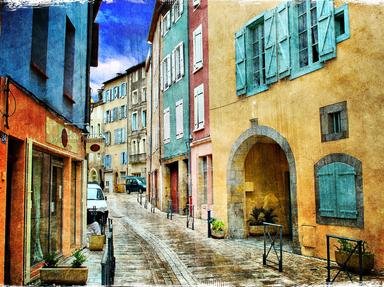Quiz Answer Key and Fun Facts
1. DUTCH ARTIST ARRESTED FOR SELLING OLD MASTER TO THE NAZIS
Van Meegeren claims painting found among secret Nazi stash is a forgery he created and passed off as an original by a Dutch Old Master.
Which painter, responsible for "The Girl with a Pearl Earring", had he mimicked?
2. FAKE DISCOVERED HANGING IN VENEZUELAN GALLERY
"Odalisque in Red Trousers" replaced by a copy as original is offered for sale to US gallery.
Who was the French fauvist, also known for "La Danse", whose painting had been switched?
3. IT ISN'T DIFFICULT TO MAKE HIS SCULPTURES
Robert Driessen admits to making more counterfeit sculptures than the artist made originals.
Which great 20th century Swiss artist, whose likeness is on the Swiss 100 franc note, did he fraudulently replicate?
4. HUSBAND AND WIFE FORGERS FOOL ART MARKET
Wolfgang and Helene Beltracchi bring dozens of paintings, previously believed missing, to market.
Who was the artist, a pioneer of Dadaism responsible for "Ubu Imperator", who was among those whose missing paintings were "discovered"?
5. MASTER FORGER FOUND DEAD IN ROME STREET
Eric Hebborn had admitted to thousands of forgeries and challenged experts to spot the difference between his drawings and the originals.
Who was the 19th century French realist painter, known for such works as "Woman with a Pearl" and "Marietta", whose work he had replicated?
6. FAKES PAINTED, SOLD AND UNCOVERED IN ONE DAY
Russian artist's paintings revealed as forgeries by the artist himself in chance encounter.
Who was the modernist sculptor, stained glass creator and painter of "I and the Village" who unearthed the subterfuge?
7. THE SINS OF THE SON ARE LAID UPON THE FATHER
Copies of "Netherlandish Proverbs" revealed to have been painted by the son of the Dutch master not by the artist himself.
Who is the 16th century Flemish Renaissance artist that painted the original?
8. FORGER AVENGES IMPOVERISHED ARTISTS BY DUPING DEALERS
Art restorer Tom Keating claims that his fakes are an attack on the gallery industry.
Dealers of the drawings of which 17th century Dutch master, famous for painting "The Night Watch" and other masterpieces, were among Keating's victims?
9. INNOCENT MISTAKE LEADS TO GUILTY CAREER
Elmyr de Hory began creating his forgeries after a woman mistakenly attributed his drawing as an original by legendary Spanish artist.
Who was that artist, famous for his blue and rose periods?
10. PRESTIGIOUS LONDON GALLERY OWNS UP TO FORGERY IN COLLECTION
Painting acquired as work of Henry VIII's court painter is revealed as fake by scientists.
Whose "Portrait of Alexander Mornauer" turned out to have been amended from a 15th century portrait by a unknown German painter to look like a 16th century original?
Source: Author
Snowman
This quiz was reviewed by FunTrivia editor
looney_tunes before going online.
Any errors found in FunTrivia content are routinely corrected through our feedback system.
